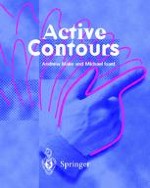1998 | Buch
Active Contours
The Application of Techniques from Graphics, Vision, Control Theory and Statistics to Visual Tracking of Shapes in Motion
verfasst von: Andrew Blake, Michael Isard
Verlag: Springer London
Enthalten in: Professional Book Archive
